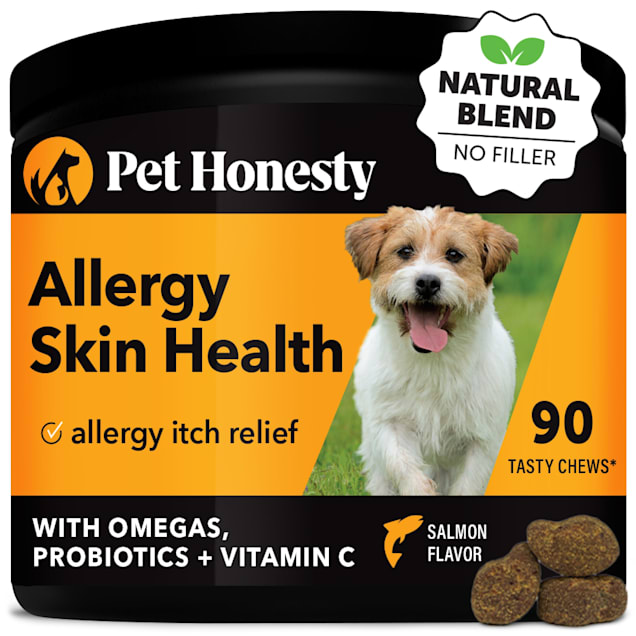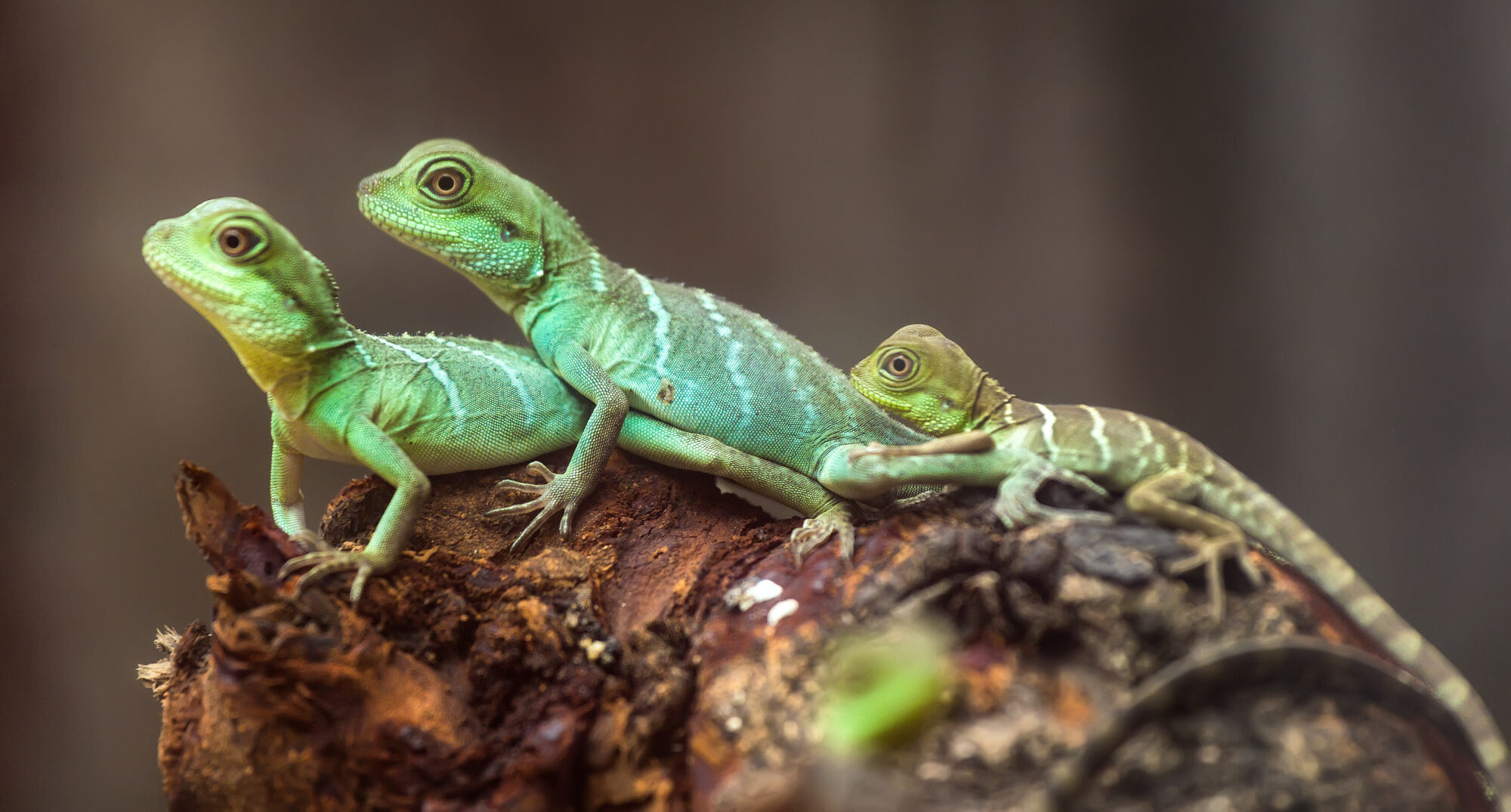Reptile allergies can be a challenge for pet owners. They often come as a surprise.
Living with these allergies doesn’t mean you have to give up your beloved pet. With a few adjustments, you can manage your symptoms and enjoy your reptile’s company. Understanding the causes and triggers of your allergies is the first step.
It helps you take control and find effective solutions. From cleaning routines to pet handling, small changes can make a big difference. This guide will offer practical tips to reduce allergic reactions. You’ll learn how to create a comfortable environment for both you and your pet. Ready to breathe easier and maintain your bond with your reptile? Read on to discover how.
Also Read

Credit: www.petco.com
Recognizing Reptile Allergies
Living with reptile allergies can be challenging. Recognizing the symptoms early can help manage the condition. Understanding the signs and taking proactive steps can ensure a healthy environment for both you and your pet.
Common Symptoms
Reptile allergies can manifest in various ways. Here are some common symptoms:
- Skin reactions: Itching, redness, or hives after touching the reptile.
- Respiratory issues: Sneezing, coughing, or wheezing.
- Eye irritation: Watery or itchy eyes.
- Nasal congestion: Runny or stuffy nose.
Diagnosing Allergies
Diagnosing reptile allergies involves several steps. Consult a doctor if you suspect an allergy. Here is how it works:
- Medical History: The doctor will ask about your symptoms and exposure to reptiles.
- Physical Exam: The doctor will check for signs of allergic reactions.
- Allergy Tests: Skin prick tests or blood tests can confirm the allergy.
| Symptom | Description |
|---|---|
| Skin reactions | Itching, redness, hives |
| Respiratory issues | Sneezing, coughing, wheezing |
| Eye irritation | Watery, itchy eyes |
| Nasal congestion | Runny, stuffy nose |
Choosing Allergy-friendly Reptiles
Living with reptile allergies doesn’t mean you can’t enjoy the companionship of these fascinating creatures. Choosing the right reptile can make a big difference in managing allergies. By selecting species with fewer allergens, you can still have a pet without constant discomfort.
Species Recommendations
Some reptiles are better suited for allergy sufferers. Consider these species:
Leopard Geckos are a top choice. They have minimal shedding and dander.
Corn Snakes are another excellent option. They are clean and low-maintenance.
Crested Geckos also make great pets. They produce little dander and don’t require a heat lamp.
Hypoallergenic Traits
Look for reptiles with specific traits. Some reptiles shed less skin, reducing allergens.
Reptiles that don’t require heat lamps are better. Heat can spread allergens more easily.
Choose reptiles that are easy to clean. Less mess means fewer allergens around your home.
Reptiles without fur or feathers are preferable. These features often trigger allergies in pet owners.
Creating A Safe Home Environment
Living with reptile allergies can be challenging for pet owners. A safe home environment helps manage symptoms and ensures comfort. This involves creating allergen-free zones, maintaining effective cleaning routines, and making smart choices. Let’s explore how to create a safe space for both you and your reptile friend.
Allergen-free Zones
Designate specific areas where your reptile is not allowed. Bedrooms and living rooms are great options. This limits the spread of allergens and provides a safe space for you. Use air purifiers in these zones to reduce airborne particles. Always keep doors closed to maintain the barrier.
Effective Cleaning Routines
Regular cleaning minimizes allergens in your home. Clean your reptile’s habitat frequently. Use gloves and masks to avoid direct contact with allergens. Wash your hands thoroughly after cleaning. Vacuum carpets and rugs using a HEPA filter vacuum. This captures small particles more effectively. Wipe down surfaces with a damp cloth to trap and remove dust. Launder bedding and curtains regularly to keep allergens at bay.
These steps help create a safer living environment for those with reptile allergies. By taking these actions, you can enjoy your pet without discomfort.
Managing Allergies With Medication
Living with reptile allergies can be challenging. However, medication can help manage symptoms. This section explores over-the-counter options and prescription treatments. These methods can help you live comfortably with your scaly friends.
Over-the-counter Options
Over-the-counter medications are often the first line of defense. They are easily available and do not require a prescription. Here are some common options:
- Antihistamines: These can reduce sneezing, itching, and runny nose. Popular brands include Benadryl and Claritin.
- Decongestants: These help clear nasal passages. Look for products like Sudafed.
- Nasal Sprays: Saline sprays can keep nasal passages moist. They reduce irritation from allergens.
Prescription Treatments
If over-the-counter options do not work, consult your doctor. Prescription medications might be necessary. Here are some treatments your doctor might suggest:
- Prescription Antihistamines: Stronger than over-the-counter options. Examples include Allegra and Xyzal.
- Corticosteroids: Reduce inflammation and other symptoms. Nasal sprays like Flonase are common.
- Allergy Shots: Also known as immunotherapy. This method gradually reduces sensitivity to allergens.
It is vital to follow your doctor’s advice. Always discuss potential side effects of any medication with your healthcare provider.
| Medication Type | Examples | Benefits |
|---|---|---|
| Over-the-Counter Antihistamines | Benadryl, Claritin | Reduces sneezing, itching |
| Decongestants | Sudafed | Clears nasal passages |
| Prescription Antihistamines | Allegra, Xyzal | Stronger relief |
| Corticosteroids | Flonase | Reduces inflammation |
| Allergy Shots | Immunotherapy | Reduces sensitivity |
Implementing Allergy-reducing Habits
Living with reptile allergies can be challenging, especially for pet owners. Adopting specific habits can help manage symptoms. Here are some actionable tips to help you live more comfortably with your reptile friends.
Proper Handling Techniques
Handling your reptile correctly can reduce allergic reactions. Always wash your hands thoroughly before and after handling. This prevents the spread of allergens. Avoid touching your face, especially your eyes and mouth, while handling your reptile. Wearing gloves can add an extra layer of protection.
Additionally, keep your reptile’s enclosure clean. Regularly remove waste and uneaten food. This minimizes allergen buildup. Use a high-efficiency particulate air (HEPA) filter near the enclosure. It helps trap airborne particles and reduce allergens.
Regular Vet Visits
Scheduling regular vet visits is crucial. A vet can check your reptile for health issues. Healthy reptiles shed less skin and produce fewer allergens. Discuss with your vet about hypoallergenic diets. These diets can sometimes reduce allergen production.
Maintain a vaccination schedule and follow your vet’s advice on deworming. Healthy reptiles mean fewer allergens. Keep a record of all vet visits and follow-up on any prescribed treatments or recommendations.
Implementing these habits can make a big difference. They help reduce the impact of reptile allergies on your daily life. Stay proactive and enjoy a better experience with your reptile pets.
Improving Indoor Air Quality
Living with reptile allergies can be challenging, but there are ways to make your home more comfortable. Improving indoor air quality is key to reducing allergic reactions. By implementing a few simple strategies, you can ensure your living space remains clean and allergy-free.
Air Purifiers
Air purifiers help remove allergens from the air. Choose a model with a HEPA filter. HEPA filters capture tiny particles that can trigger allergies. Place air purifiers in rooms where your reptile spends time. Run them continuously for the best results. Regularly clean and replace filters as recommended by the manufacturer.
Ventilation Tips
Proper ventilation is essential for reducing allergens. Open windows to let fresh air circulate. Use exhaust fans in bathrooms and kitchens to remove humidity. Humidity can worsen allergy symptoms. Install a ventilation system if your home lacks natural airflow. Ensure vents and ducts are clean and free from dust.
Exploring Alternative Pet Solutions
Living with reptile allergies can be challenging for pet owners. Many people love reptiles but struggle with allergies. Thankfully, there are alternative solutions to consider. These alternatives can help you enjoy the companionship of pets without the discomfort of allergies.
Virtual Pet Interaction
Virtual pets offer a great way to experience pet ownership. These digital companions can be found in various apps and games. They mimic real pets’ behavior and needs, allowing you to care for them. Virtual pets require feeding, grooming, and playtime, just like real pets. This interaction can provide emotional satisfaction without the risk of allergies.
Another benefit of virtual pets is their low cost and maintenance. You don’t need to spend money on food, supplies, or vet visits. Virtual pets are also ideal for those with busy schedules. They can be accessed anytime through your smartphone or computer. This convenience makes them an appealing alternative.
Non-allergenic Pet Options
If you prefer a physical pet, consider non-allergenic options. Some pets are less likely to cause allergic reactions. For example, fish and reptiles with scales instead of fur can be suitable. Fish tanks can create a calming atmosphere in your home. They require regular cleaning, but they do not produce allergens.
Another non-allergenic pet option is amphibians. Frogs and salamanders can make interesting pets. They have unique behaviors and do not shed fur. It is important to research their care needs. Ensure you can provide the right environment for them.
Birds can also be a good choice for allergy sufferers. Many birds produce fewer allergens than furry pets. Smaller birds like finches and canaries are easier to care for. They can bring joy with their songs and vibrant colors.
Lastly, consider hypoallergenic dog breeds. Some dog breeds produce fewer allergens. Breeds like poodles and schnauzers are known for being more allergy-friendly. Regular grooming can also help reduce allergens. Always spend time with a dog before committing to ensure you do not react.

Credit: www.tenwestvet.com
Seeking Professional Help
Living with reptile allergies can be challenging. Seeking professional help can provide relief and improve your quality of life. This section explores the benefits of consulting allergists and pet behavior experts.
Consulting Allergists
Allergists specialize in diagnosing and treating allergies. They can conduct tests to pinpoint specific allergens. This helps in creating a personalized treatment plan.
Allergy tests can identify whether your symptoms are due to your reptile. With this information, allergists can suggest effective medications or therapies.
Immunotherapy might be an option. This treatment involves regular exposure to small amounts of the allergen. Over time, it reduces sensitivity and improves symptoms.
Pet Behavior Experts
Pet behavior experts can help manage your reptile’s environment. They provide advice on reducing allergens at home. This includes cleaning routines and habitat maintenance.
Behavior experts can also suggest ways to minimize contact with allergens. For instance, they might recommend specific handling techniques or tools.
Consulting with these professionals can make living with reptile allergies more manageable. Their guidance can improve both your health and your pet’s well-being.

Credit: in.pinterest.com
Frequently Asked Questions
Can You Be Allergic To Reptiles?
Yes, you can be allergic to reptiles. Symptoms include sneezing, itching, and skin rashes. Always consult a doctor for proper diagnosis.
What Are Common Reptile Allergy Symptoms?
Common symptoms include sneezing, runny nose, itchy eyes, and skin rashes. Severe reactions may include breathing difficulties. Always seek medical advice.
How Can I Manage Reptile Allergies At Home?
Regular cleaning and using air purifiers can help. Wash your hands after handling reptiles. Consider non-allergenic pets if symptoms persist.
Are There Hypoallergenic Reptiles?
No reptiles are truly hypoallergenic. However, some people react less to certain species. Always handle reptiles with caution and monitor your symptoms.
Conclusion
Living with reptile allergies can be challenging, but it’s manageable. Follow the tips shared to create a safe environment for both you and your pet. Regular cleaning and hygiene practices reduce allergen exposure. Consult with your doctor if symptoms persist.
Enjoy your reptile pet with these precautions in place. Your health matters, and so does your pet’s well-being. Stay informed and proactive. Both you and your pet can live happily together.




